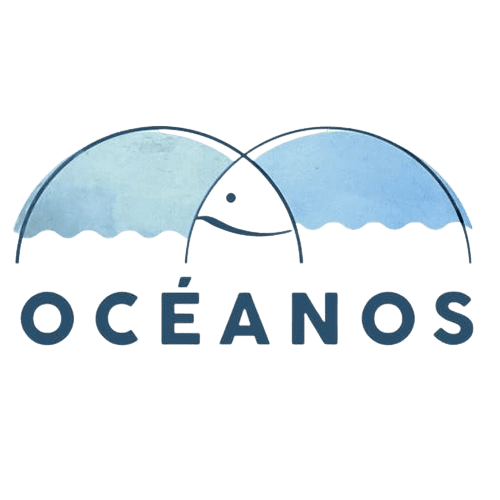Beagle group
Fishing and aquaculture
Life in the oceans is under serious threat due to the progressive increase in fish consumption, which has led to the development of aquaculture that is not always respectful of the environment and to the use of fishing gear that does not discriminate between sizes or species.
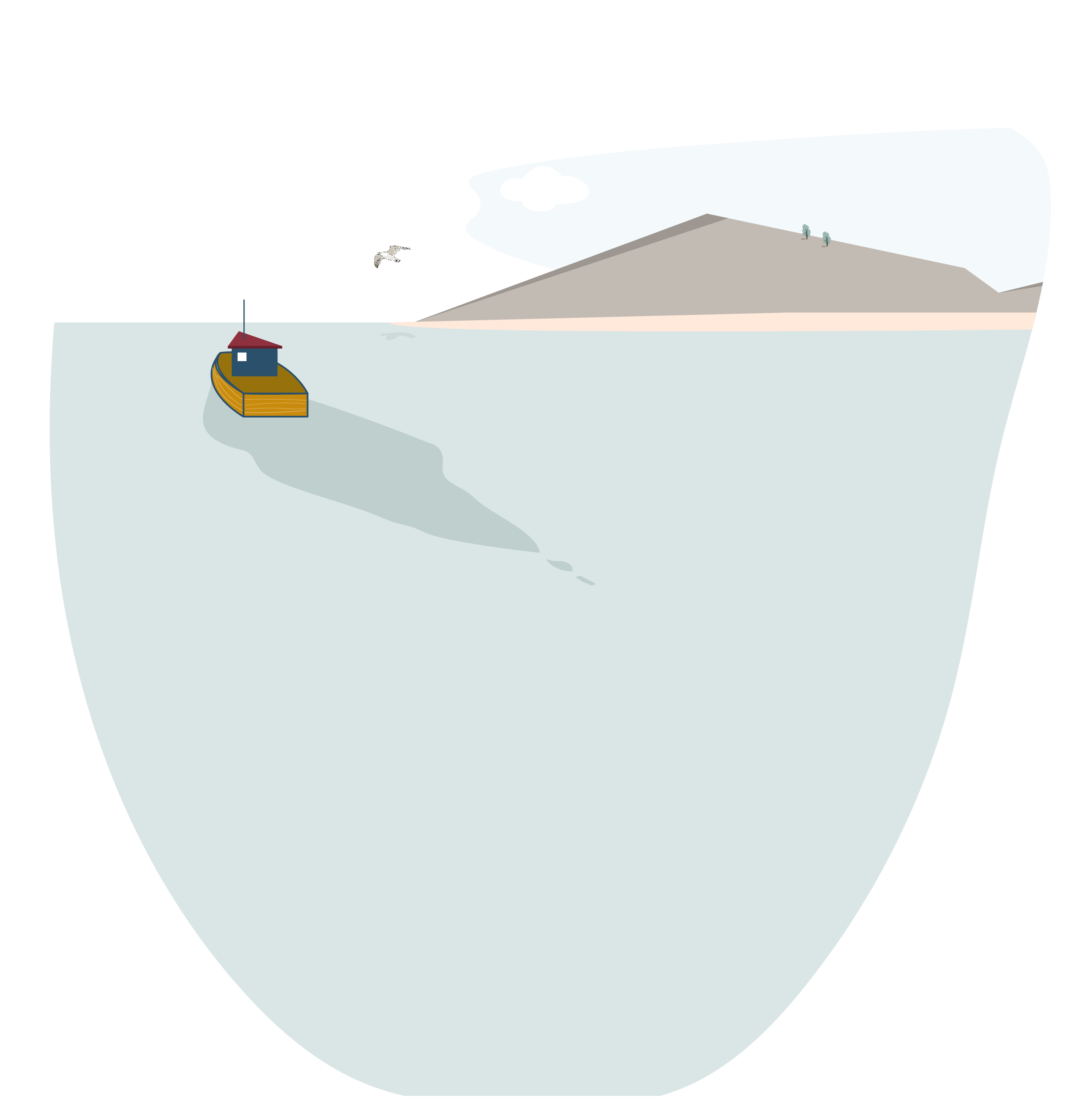
Explain which of the fishing techniques you think is more sustainable. Of the fish in the Food Sources section, specify which can be fished using this method and which cannot. Explain your answer.
You can find the answer in the FISHING sections
Almadraba
This is a fixed trapping technique for catching migrating fish, generally tuna. It consists of several net sections that intercept the tuna and guide them to a series of chambers; the last one has no escape and they become trapped. This method is rather large, stretching from the seabed to the surface. They are permanently in position making placement and maintenance a financially costly operation.
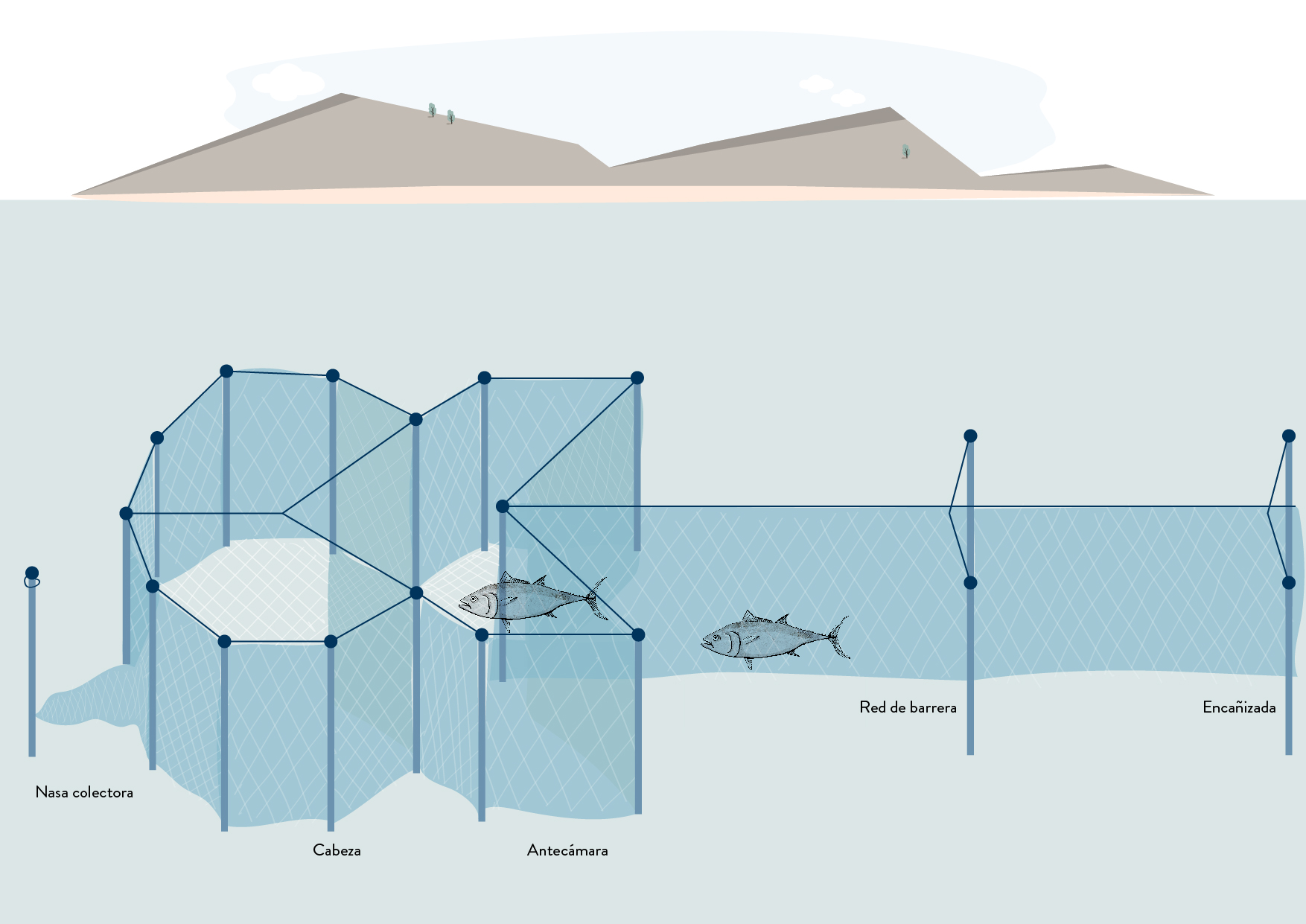
Trawl net
This is basically a net shaped like a bag that is towed by the boat. They can be bottom trawl or pelagic nets. They are enormous fishing nets that catch everything in their path when they trawl the bottom or are towed in the sea.
When trawl nets are used, 30%–70% of the catch (in weight) is thrown away as it is bycatch or discards.
This is an active technique as it does not wait, nor does it depend on the movements of fish to catch them; instead, the method goes in search of the fish.
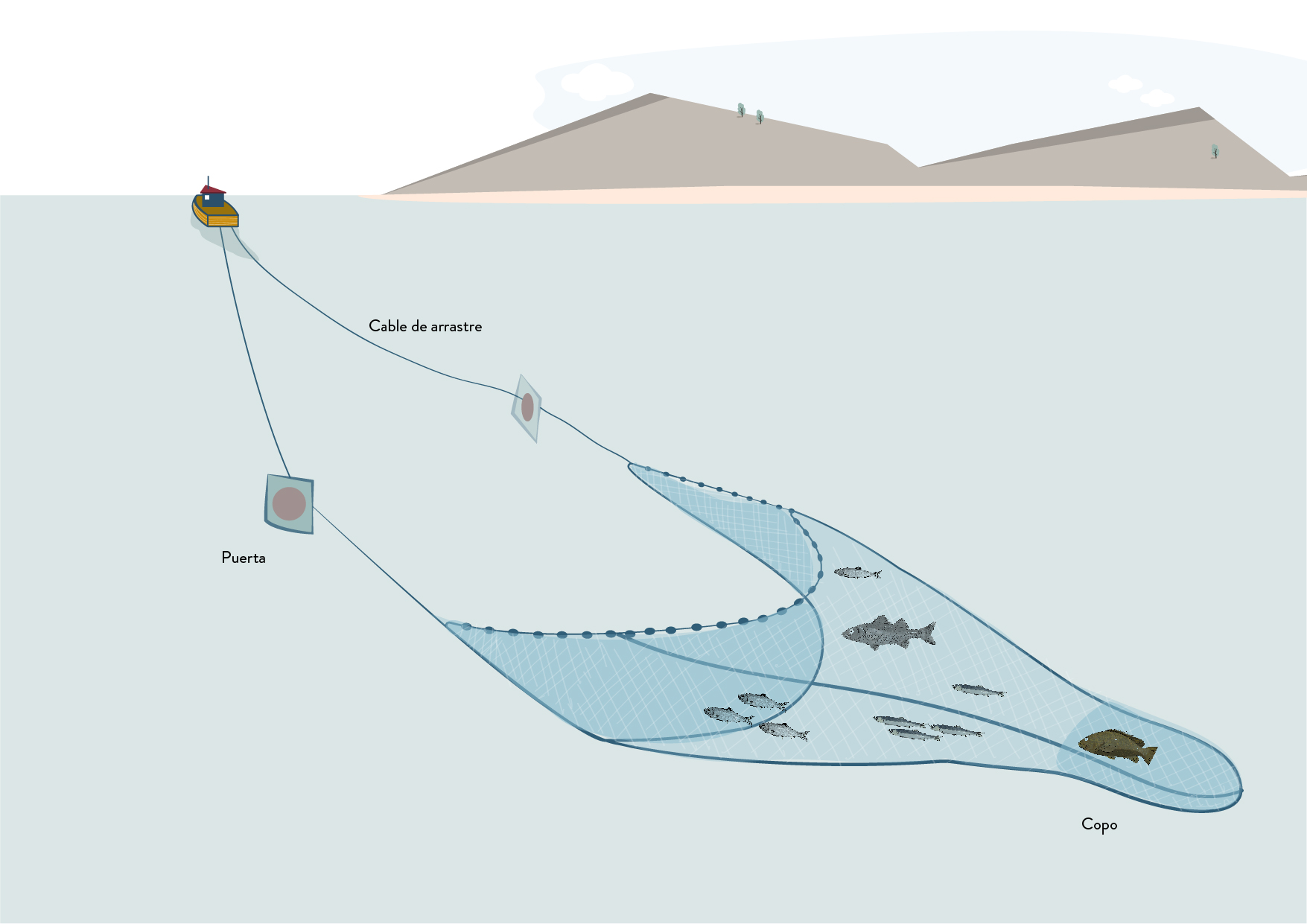
Seining
Rectangular net with floats at the top and ballast at the bottom so that the net acts as a fence. In general, fish are attracted by powerful spotlights used to light up the water surface at night. Once the shoal has been located and concentrated, the net is rapidly lowered and the shoal surrounded. The net is closed at the bottom until it forms a purse where the fish are caught.
This method can be very specific with hardly any bycatch when targeting shoals of adults.
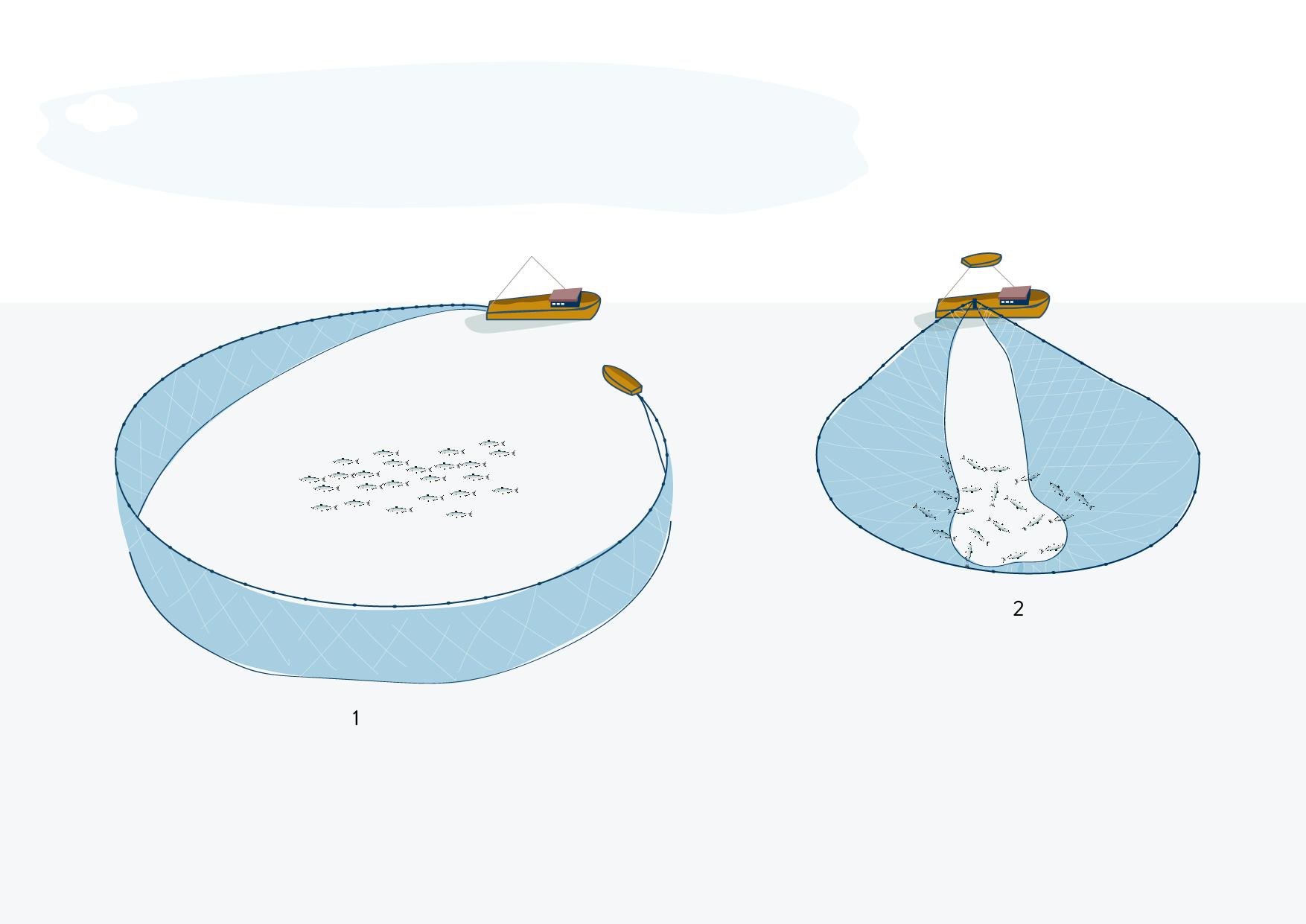
Trolling
This consists of drawing several lines with one or more hooks from a boat. Fishing occurs when the boat is moving.
Trolling is more selective than other fishing techniques in terms of species and size and it provides high-quality fish. The lines are deployed for a relatively short time so that any non-target species caught can be returned alive to the sea.

Longline
Longline consists of a main line parallel to the sea floor. At regular intervals along the main line are snoods, which are thinner branch lines around 1 m long with hooks at the end. The size of the longlines varies from 100 to 60,000 m.
The longline catches many organisms (sharks, turtles, marine mammals and seabirds). Bycatch can be reduced by several methods, including circular hooks to prevent catching turtles. Deploying lines for a short period and at a greater depth at night can reduce the number of seabirds caught by the hooks.
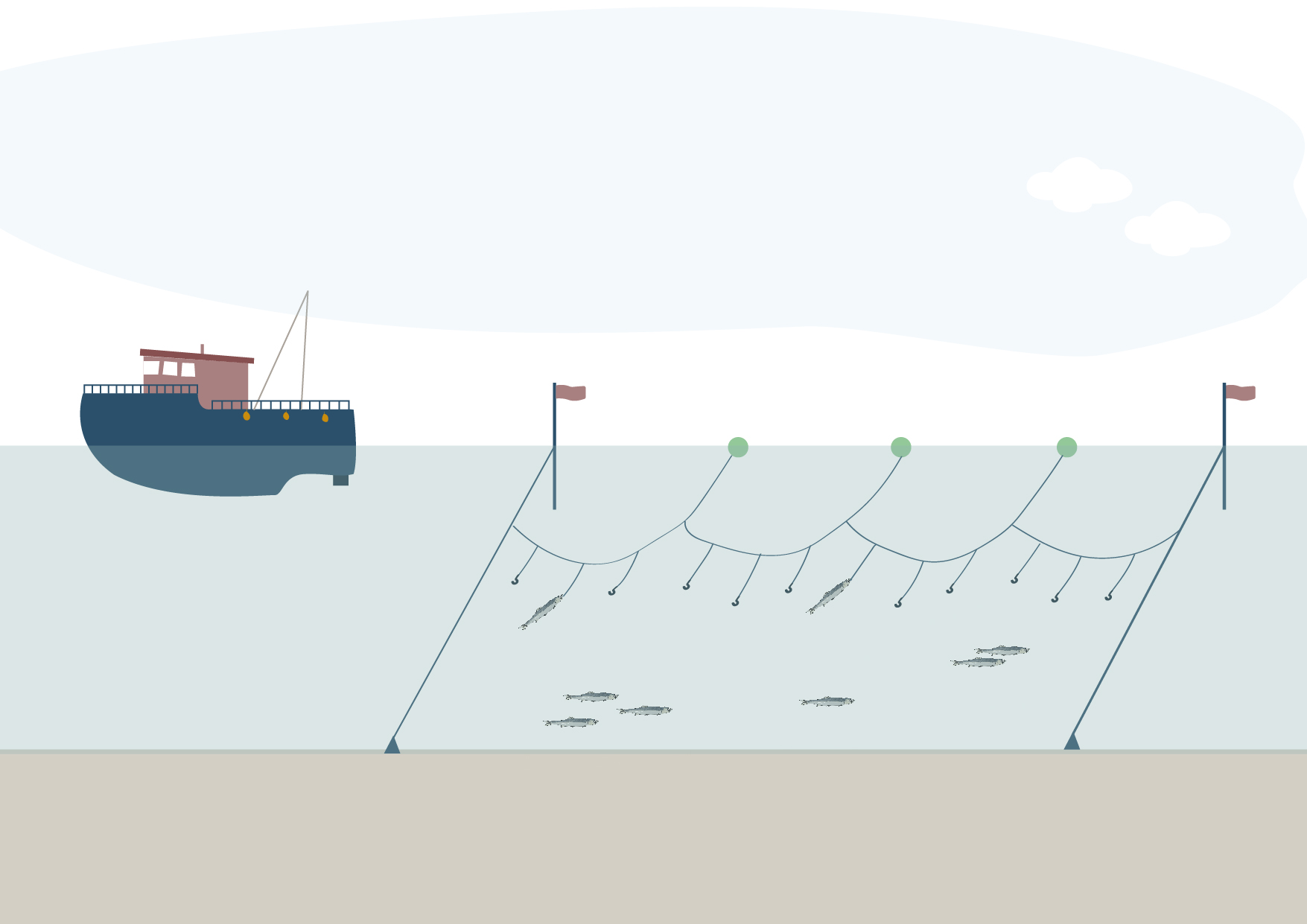
Trammelling
This is a fixed sea-floor technique consisting of three overlapping nets. The two outer nets have a much larger mesh size than the inner net. The latter’s surface area is almost twice the surface area of the outer nets so that it can form bags arranged between the other two.
When they are placed correctly and the mesh size is appropriate, these nets can be highly selective concerning size: small fish can swim easily through the net, while larger fish become trapped. Bottom trammel nets have far less impact on the seabed than bottom techniques, such as trawl nets.
Badly positioned trammel nets or a bad choice of net size can lead to a higher bycatch. Trammel nets are associated with the bycatch of marine mammals. Acoustic deterrent devices or underwater sound-emitting devices connected to the nets can discourage some marine mammals from swimming too close and being caught; however, tests have shown mixed results of effectiveness depending on the fishing ground and the mammal species.
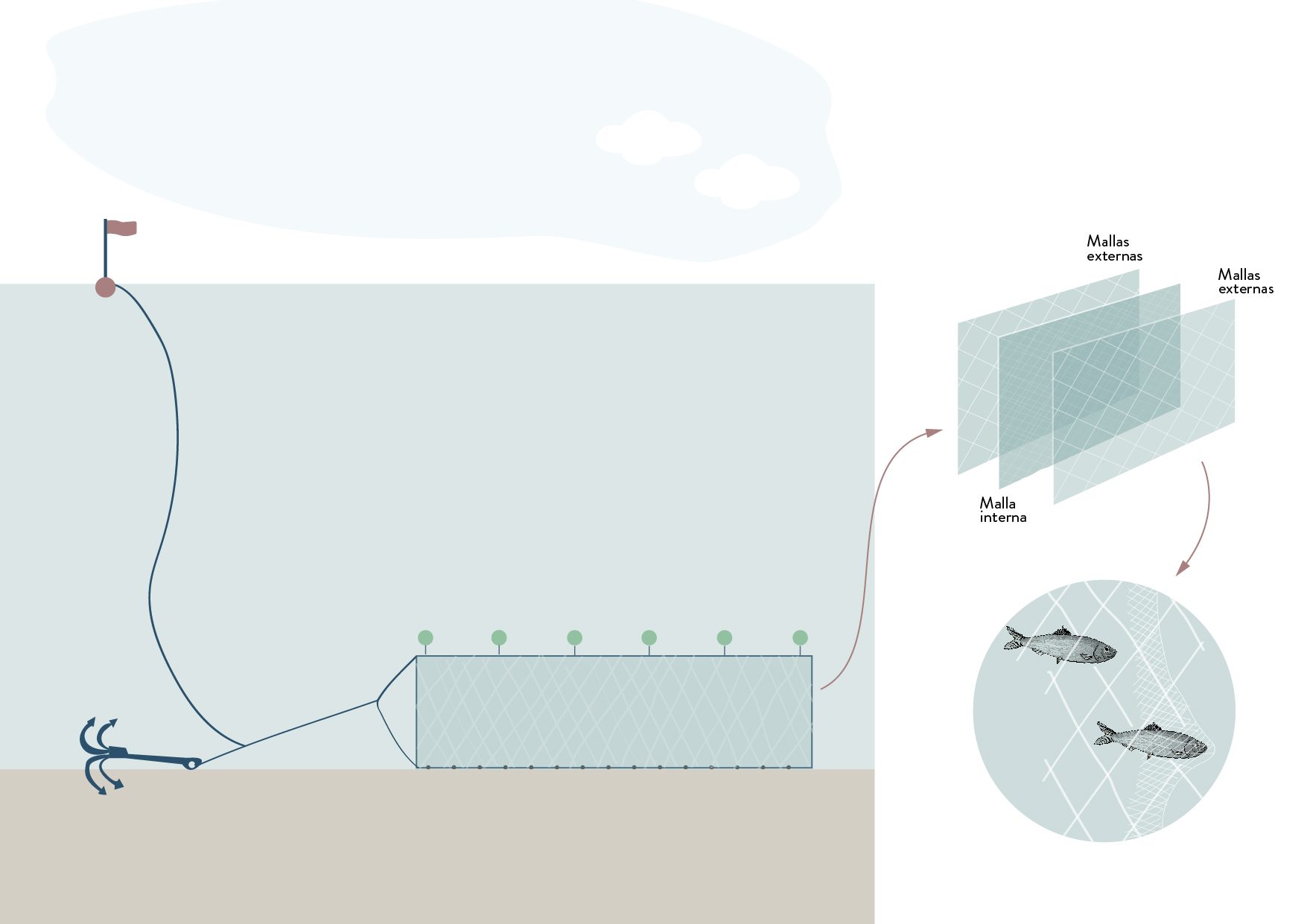
Gillnetting
This is a fixed technique consisting of a net with a series of floats at the top to keep it perpendicular to the sea floor and lead weights at the bottom to keep it close to the seabed. It is called gillnetting because the fish is caught by its gills.
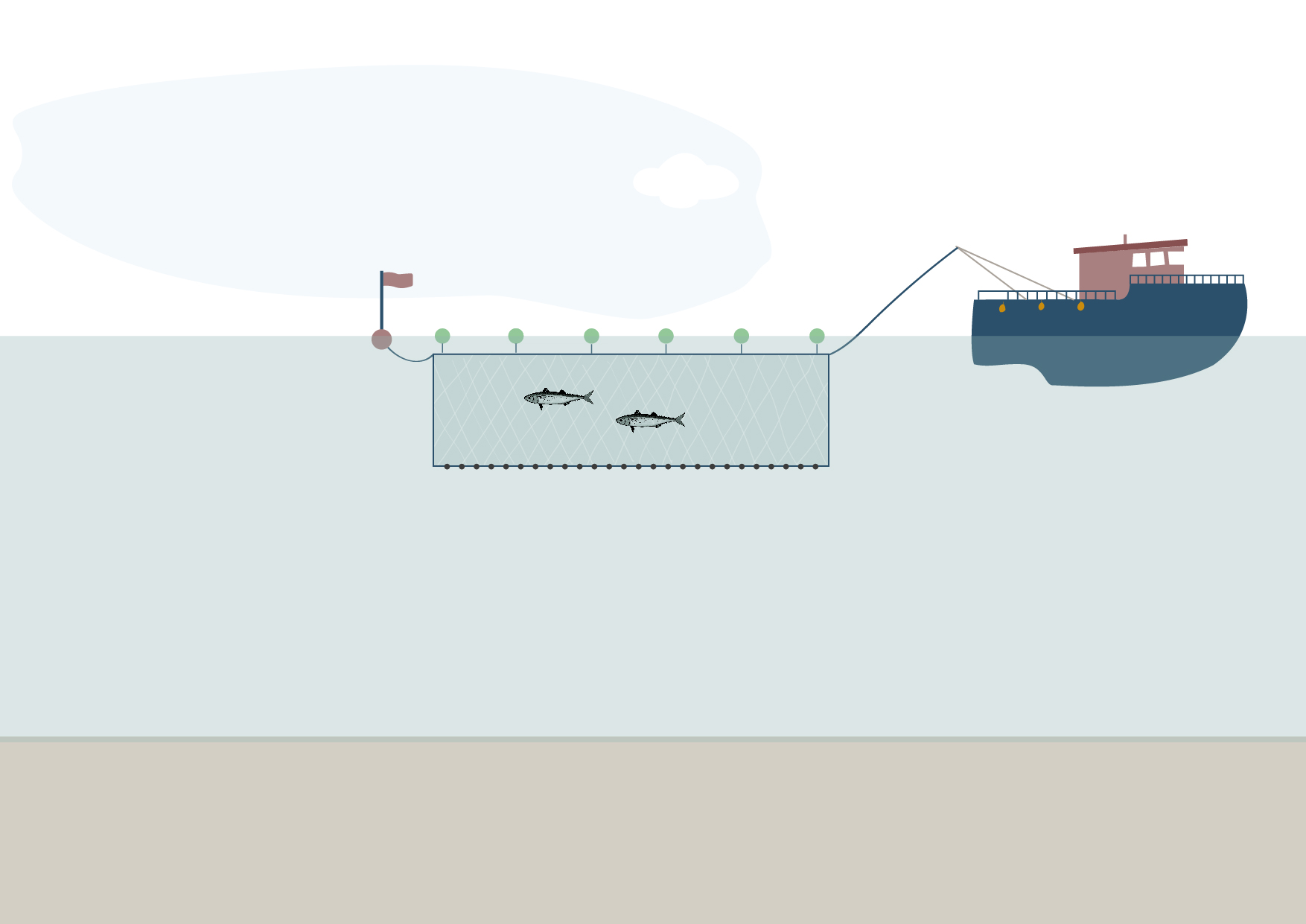
AQUACULTURE
Fish farming or aquaculture consists of gathering and reproducing fish, crustaceans, molluscs and seaweed in specific structures to produce food. This production is not only used for human consumption since almost a third of sea fish or fish from aquaculture is used to feed livestock and to fertilise cropland.
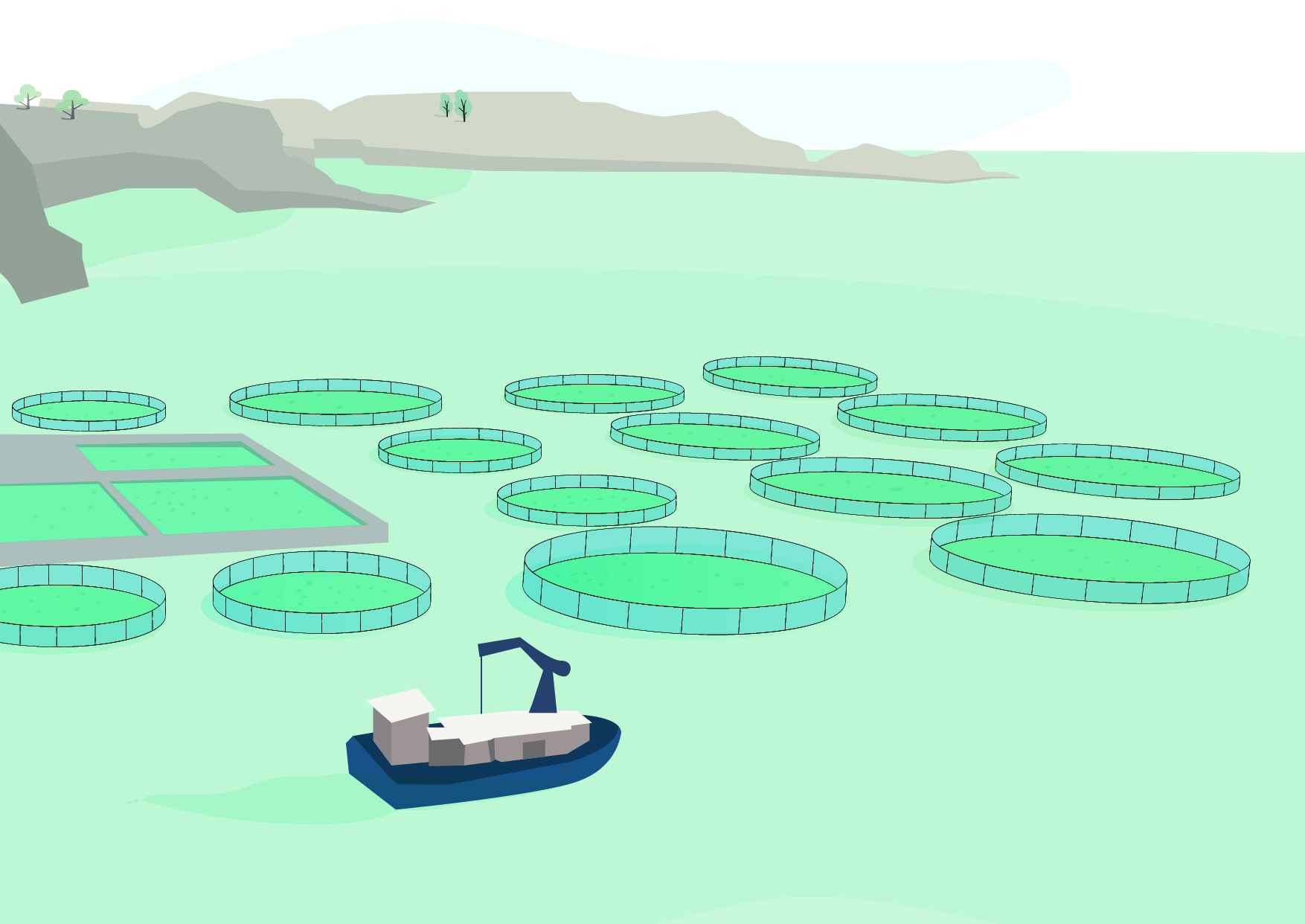
Aquaculture can produce high financial and production yields per surface-area unit as it does not need large amounts of energy to maintain it and it does not depend on the price of oil as commercial fishing does.
It also requires a great deal of intensive labour that can provide jobs in developing countries.
However, its implementation requires considerable capital and it can destroy areas of ecological interest (such as mangrove forests).
Personnel with scientific knowledge are also needed to control populations (infections, contamination from neighbouring areas) and the waste generated can contaminate both groundwater and surface water.
Worldwide fish production has increased over the years. In the 1980s, the FAO outlined scientists’ sustainable production estimate for worldwide fisheries to be around 100 million tonnes of fish per year and raised the problem of overfishing. Overfishing occurs when the number of fish caught leaves hardly any for reproduction, which leads to a fall in numbers, in other words the sustainable yield is exceeded.
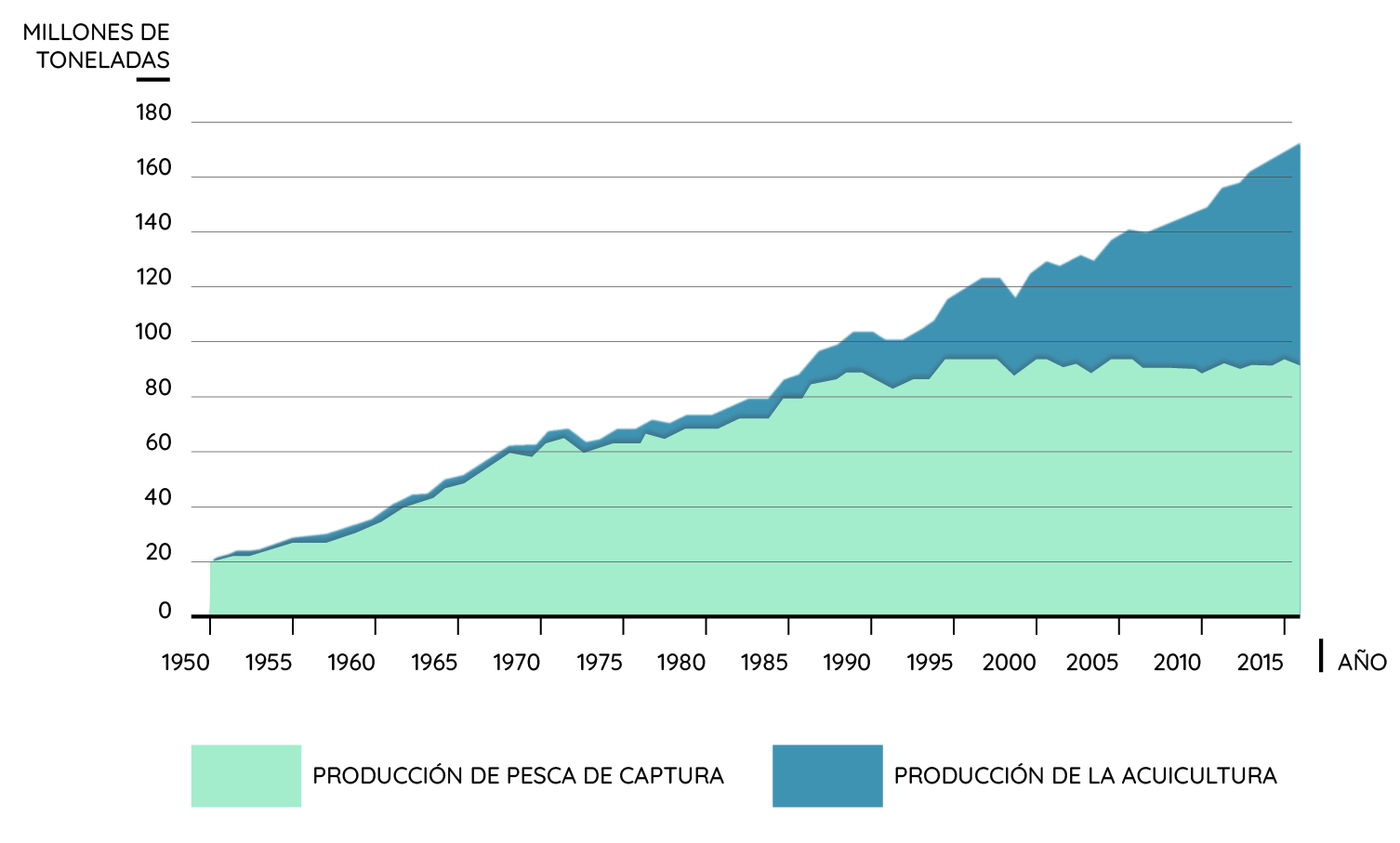
Aquaculture developed in parallel and by the 1980s it already accounted for 10% of the commercial collection of fish. Aquaculture production has grown significantly recently, while fish tonnage has remained relatively stable, as you can see in the graph.
Summarise the main advantages and limitations of the following proposals to increase the world supply of fish in the next 30 years.
- a) Catching more fish in the open sea.
- b) Producing more fish and molluscs in fish farming or aquaculture.
